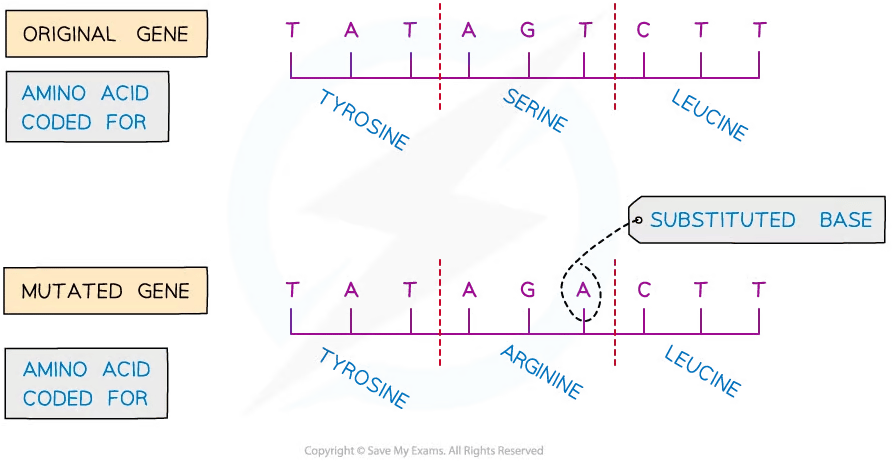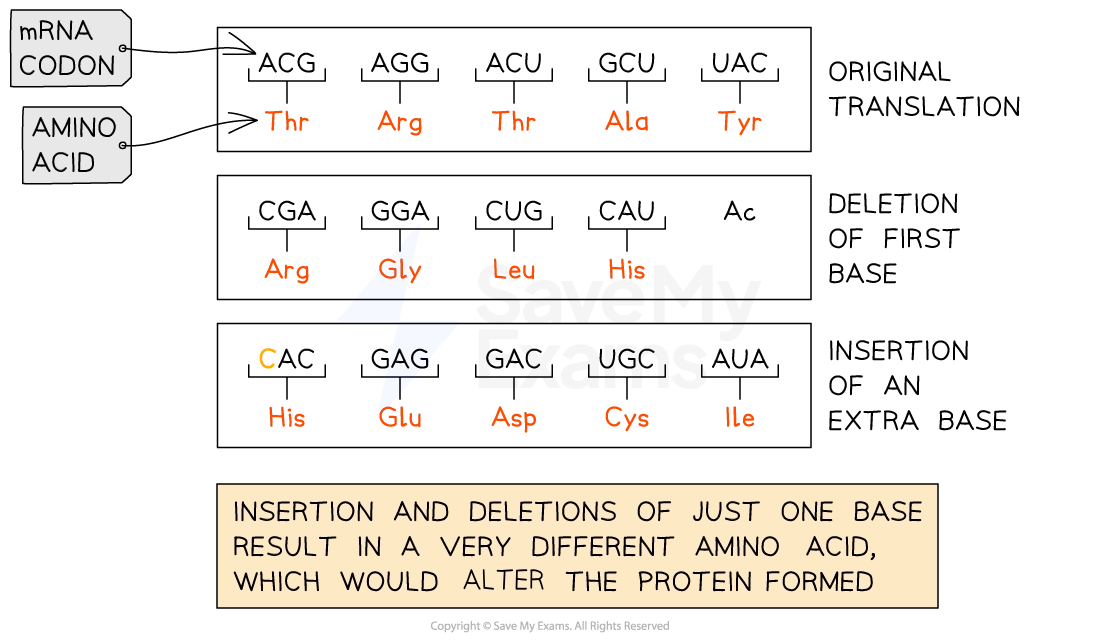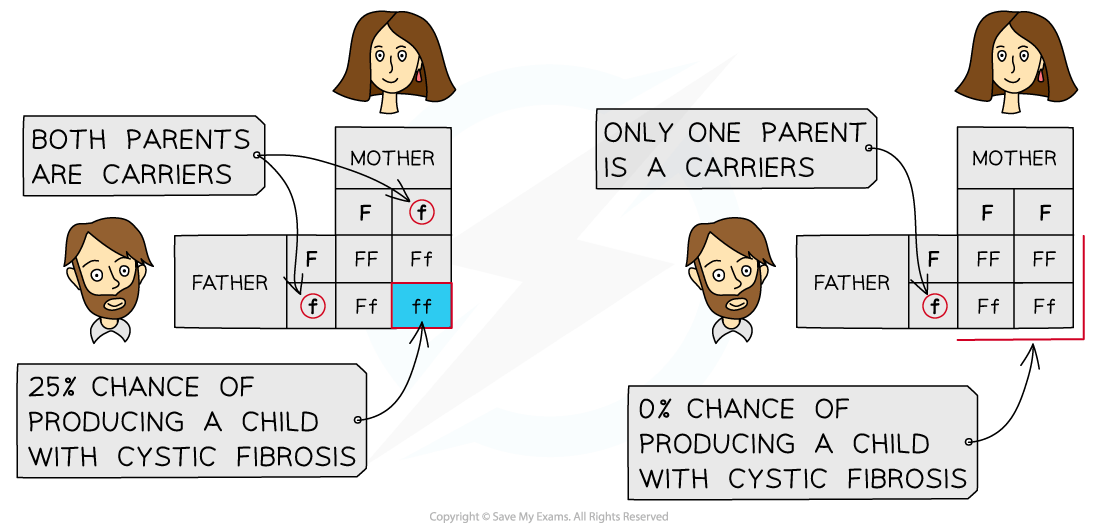Mutations (College Board AP® Biology): Study Guide
Types of mutation
A mutation is a change in the DNA sequence
Alterations in DNA can change the type or amount of protein produced, which can in turn alter the phenotype of a cell or organism
Mutations can be:
beneficial; these result in useful new traits
detrimental; mutations that disrupt gene function, leading to disease or loss of function
neutral; mutations that have no effect on phenotype
Point mutations
A point mutation is a change to a single nucleotide in DNA—usually a one-base substitution, but sometimes a one-base insertion or deletion
Substitution mutations involve the switching of one nucleotide for another
One-base insertion mutations involve addition of a single nucleotide
One-base deletion mutations involve deletion of a single nucleotide

Because of the degenerate nature of the genetic code, it is possible for substitution mutations to be silent, meaning that there is no change to the amino acid sequence
Insertion or deletion of nucleotides, however, shifts the reading frame, meaning that they alter every codon downstream from the mutation; this is known as a frameshift mutation
Frameshift mutations are more likely to lead to major changes in amino acid sequence

Frameshift mutations are more likely to lead to:
a missense mutation: an amino acid is changed and the resulting protein is altered
a nonsense mutation: the substitution creates a premature stop codon leading to a shortened, non-functional protein
Example: cystic fibrosis and the CFTR gene
Cystic fibrosis is a genetic disorder of cell membranes resulting from a mutation in the CFTR gene
There are multiple mutations that can result in cystic fibrosis, some of which are point mutations
The mutation results in problems with the CFTR protein
It results in disruptions to ion transport in cells, particular those in the respiratory tract and reproductive organs
The body produces large amounts of thick, sticky mucus in these areas
Over time, this may damage the lungs and stop them from working properly
Cystic fibrosis is caused by a recessive allele
This means individuals who are heterozygous won’t be affected by the disorder, but are carriers
Individuals who are homozygous recessive will have the disorder

Example: adaptive melanism in pocket mice and the MC1R gene
Adaptive melanism in rock pocket mice (Chaetodipus intermedius) is the evolution of dark fur that camouflages them in volcanic rock environments, increasing their chances of survival
dark-colored fur is said to be melanic
The change in phenotype is caused by mutations in the MC1R (melanocortin 1 receptor) gene
The MC1R gene encodes a protein that regulates melanin production in hair and skin cells
Mouse individuals with MC1R mutations produce more pigment proteins, leading to darker fur and therefore better camouflage
Over generations, natural selection favors mice with dark fur in these darker environments

Unlock more, it's free!
Did this page help you?